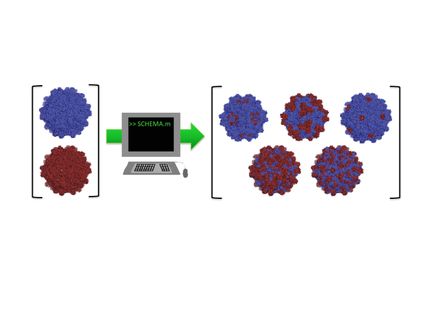Treating pulmonary dysfunction in Pompe disease with gene therapy
Researchers at the University of Florida have successfully used gene therapy to treat patients with infantile onset Pompe disease, a progressive condition that severely compromises cardiopulmonary function in the first years of life.
The team at UF’s Powell Center for Rare Disease Research and Therapy conducted the first in-human study of gene therapy to treat respiratory dysfunction in patients with infantile onset Pompe. In the study, which began in 2011, an adeno-associated virus vector was used to carry a functional copy of the affected gene to muscle cells in the diaphragms of nine patients.
In study results recently published in Experimental Neurology, breathing function improved in patients after gene therapy, compared to a period of treatment with breathing exercises before the gene therapy. The improvements were greatest in patients who were not on full-time ventilator support at the start of the study, and these patients continued to breathe independently for long periods years after treatment, said Barbara Smith, Ph.D., P.T., a co-investigator of the study and a research assistant professor in the department of physical therapy at UF’s College of Public Health and Health Professions, part of UF Health.
Pompe disease is a genetic disorder caused by the absence or deficiency of alpha-glucosidase, an enzyme required to break down the complex carbohydrate glycogen and convert it into glucose. The condition leads to the accumulation of glycogen in cardiac, smooth and skeletal muscle cells. The infantile onset form of the disease is the most severe, with untreated patients experiencing significant heart and lung failure by the second year of life.
Gabi Hernandez’s child was 4 years old and in a steady state of cardiopulmonary decline when the gene therapy was administered. She said her child’s health improved within months after dosing, noting that her child had a stronger cough and discontinued use of mechanical cough assistance and inhalers. Hernandez said her child’s cardiopulmonary health remains stable two years after treatment.
Patients who were using full-time ventilator support at the start of the study also showed some benefit from gene therapy. Many could come off the ventilator for small periods of time, allowing for unsupported breathing during some daily activities like positioning, bathing and communication.
While breathing function was enhanced by the AAV treatment administered to the diaphragm muscle, patients in the study did not functionally improve in other areas such as speaking, swallowing and limb movement.
“We are hopeful that a systemic dose and delivery of gene therapy would broadly affect whole-body strength and function, and we are working on a host of projects for such systemic delivery in Pompe and other neuromuscular conditions,” said Barry Byrne, M.D., Ph.D., director of the Powell Gene Therapy Center, a professor of pediatrics in the UF College of Medicine, and a member of the UF Genetics Institute.
Other news from the department science
Most read news
More news from our other portals
See the theme worlds for related content
Topic world Gene therapy
Genetic diseases once considered untreatable are now at the center of innovative therapeutic approaches. Research and development of gene therapies in biotech and pharma aim to directly correct or replace defective or missing genes to combat disease at the molecular level. This revolutionary approach promises not only to treat symptoms, but to eliminate the cause of the disease itself.

Topic world Gene therapy
Genetic diseases once considered untreatable are now at the center of innovative therapeutic approaches. Research and development of gene therapies in biotech and pharma aim to directly correct or replace defective or missing genes to combat disease at the molecular level. This revolutionary approach promises not only to treat symptoms, but to eliminate the cause of the disease itself.



















































